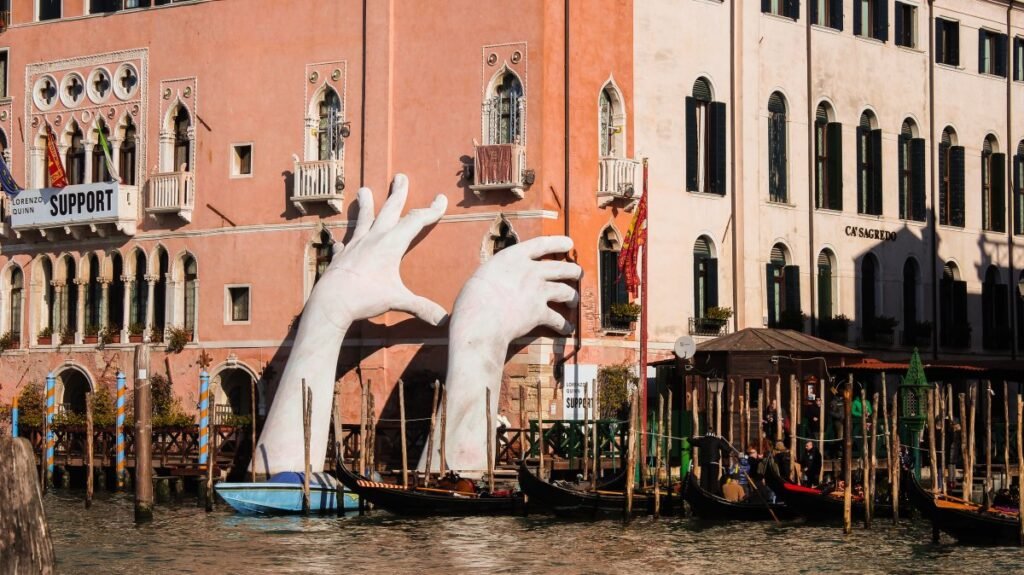Art has always had a double life, as both an expression of human spirit and a repository of value. From Renaissance patronage to today’s multimillion-dollar auctions, art’s entanglement with capital is nothing new. What is new, however, is the speed, scale and complexity with which the art business has entered the bloodstream of the global economy. Once viewed as a niche luxury market, the art world is now a powerful ecosystem of investment, cultural diplomacy, innovation and even geopolitical influence.
In recent years, art has grown beyond its traditional role of being collected, displayed or admired. It is now curated into financial portfolios, embedded into urban development strategies, traded like currency and used as a tool for both soft power and tax optimization. Major players on the global financial stage – from sovereign wealth funds to tech billionaires – have turned their gaze toward the art market not only as a cultural asset but also as an economic instrument.
The numbers speak for themselves. The global art market exceeded $65 billion in 2023, according to Art Basel and UBS’s annual report. Blue-chip artworks have consistently outperformed traditional investments over the past two decades, particularly during periods of economic volatility. Like gold or real estate, art is increasingly being seen as a hedge – a tangible, mobile and often unregulated store of value.
This shift has been fueled by a new class of collectors: younger, digital-native, often crypto-fluent investors who view art not only through the lens of beauty, but of ROI. The rise of fractional ownership, NFTs and online art marketplaces has only accelerated this movement, making the art market more liquid, accessible and speculative than ever before.
Beyond private collections, art has become a driver of urban regeneration and tourism economies. From Abu Dhabi’s Louvre to Doha’s Museum of Islamic Art, or the transformation of Istanbul’s Karaköy and Galataport districts, we see how cities are rebranding themselves as cultural destinations through massive investment in art and architecture.
In such cases, art becomes both symbol and substance: a soft power strategy that signals cosmopolitan sophistication while also generating real revenue through tourism, hospitality and retail. In fact, governments and city planners increasingly view culture not as a cost but as capital – a long-term, identity-shaping investment.
As the art market becomes more entangled with global finance, a new class of intermediaries has emerged: art advisors, wealth managers, cultural strategists. Their role is not simply to recommend paintings, but to navigate legal, logistical and tax structures surrounding cross-border transactions, provenance risks and estate planning. The opacity of the art world – its lack of regulation, price ambiguity and private sales culture – once seen as a flaw, is now leveraged as a tool for discretion, flexibility and strategic wealth preservation.
But art is more than a market; it is also a mirror. The current economic centrality of art reveals something deeper about our era: a shift in how we define value. In a world saturated with algorithms and information, artworks retain something that cannot be automated – aura, story, scarcity and soul. In that sense, the rising economic relevance of art is also a search for meaning.
Türkiye’s place in art economy
In recent years, Türkiye has begun carving out a meaningful presence in the global art ecosystem. Though not yet among the top 10 in global market share, the Turkish art market is gaining momentum – fueled by strong domestic growth, dynamic support systems and increasing visibility on the international stage. Studies show that Turkish paintings have offered investors annual returns of around 7% in real terms, with nominal returns exceeding 60%.
Istanbul’s art community, led by institutions like Akbank Sanat and the SAHA Association, is driving fresh infrastructure and programming that supports both local and international artists. Meanwhile, artists are being featured in major global fairs – from ARCO Madrid to Art Basel Hong Kong – signaling wider recognition. As Türkiye continues to expand art education, patronage and cultural diplomacy, its “slice” of the global art market is growing – not just in value but in narrative influence.
Yet for Türkiye to claim a larger slice of the global art economy, it must move beyond isolated successes and embrace a cohesive, long-term strategy. This means investing in cultural infrastructure across the country, not just in Istanbul and offering stronger state support through grants, education reforms and tax incentives for collectors and institutions.
Transparency in art sales, digitized archives and international promotion through embassies and biennials would help build global trust in Turkish art as both cultural capital and economic asset. Moreover, nurturing a new generation of collectors, patrons and culturally literate investors is essential. Art should be positioned not only as national pride, but as strategic diplomacy and soft power.
Türkiye, with its layered history and vibrant creative scene, holds immense potential to become a cultural bridge in the 21st-century art market – if it chooses to align value with vision.
As a practicing artist, I find myself both intrigued and cautious. The growing convergence between canvas and capital brings visibility, funding and mobility – but also pressure, commodification and a creeping standardization of taste. What sells becomes what is shown, and what is shown begins to define what is valued.
The challenge and opportunity is to navigate this tension with awareness. Artists, collectors and institutions must ask: Are we feeding the system, or shaping it? Are we reflecting our times, or being swallowed by its algorithms?
Art is no longer the periphery of the economy. It is a new kind of currency – emotional, symbolic and financial all at once. And as global wealth continues to seek both yield and identity, the art business will only grow in importance. The question is not whether art will continue to play a central role in the world economy, but whether we, as artists and cultural stewards, can hold the line between value and values.
Because while money may move the market, meaning still moves the soul.


